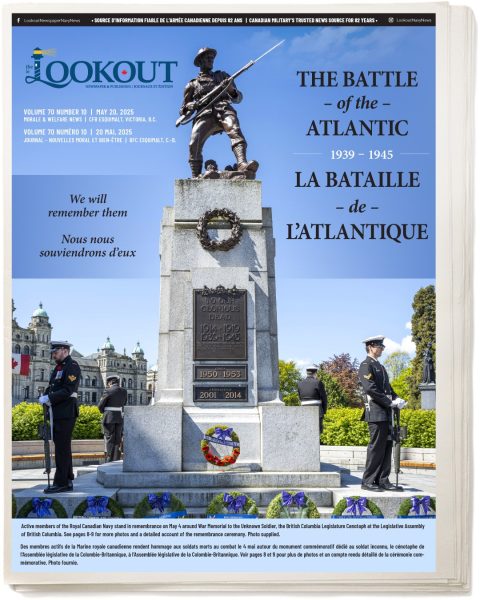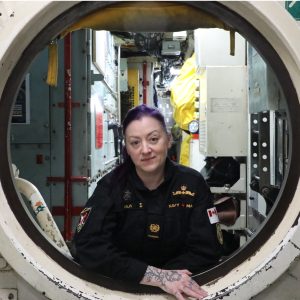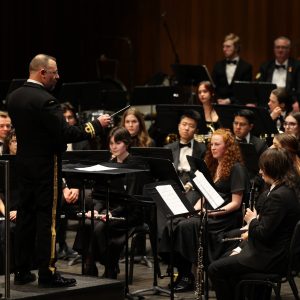
Base platoons play integral role in fighting fire
[caption id="attachment_4371" align="alignnone" width="300"] Taken between 2:45 and 3 a.m., these photos show the blaze at its peak.[/caption] It only took three minutes for CFB Esquimalt firefighters to respond to the 2:30 a.m. emergency call last Tuesday; however, when they arrived on scene the Tudor House was already engulfed in flames. “As soon as I pulled out of the station I saw flames three metres above the roof,” says Battalion Chief, Randy Morton.Bright orange flames were consuming both floors of the building and the unique castle-like tower. But the fire hadn’t quite taken the beer and wine store, and Morton knew it wouldn’t be long before the alcohol inside became fuel for the fire.With no one inside the building, Morton and the Incident Commander from Esquimalt Municipal Fire decided their mission would be to contain the fire to the 109-year-old structure and keep surrounding buildings safe.The two fire departments, which have a mutual aid agreement, set up a perimetre of people and equipment, dousing the structure with water from three hydrants to ensure the flames wouldn’t reach the building next door, which housed residents and several businesses.“It was in such close proximity to the building behind it, it would have set that building on fire,” says Morton.Even though firefighters managed to contain the fire by about 4:20 a.m., smoke from the blaze migrated through open windows in the next building setting off fire alarms. Residents were being evacuated.Adding to the inferno was alcohol from the bar and grease from the kitchen fryer. There was also a gas line that had to be closed off. Fortis BC employees arrived at 3:30 a.m. and dug into the ground with a backhoe to manually pinch the line.Eliminating at least one fuel source for the fire went a long way to help crews douse...


































